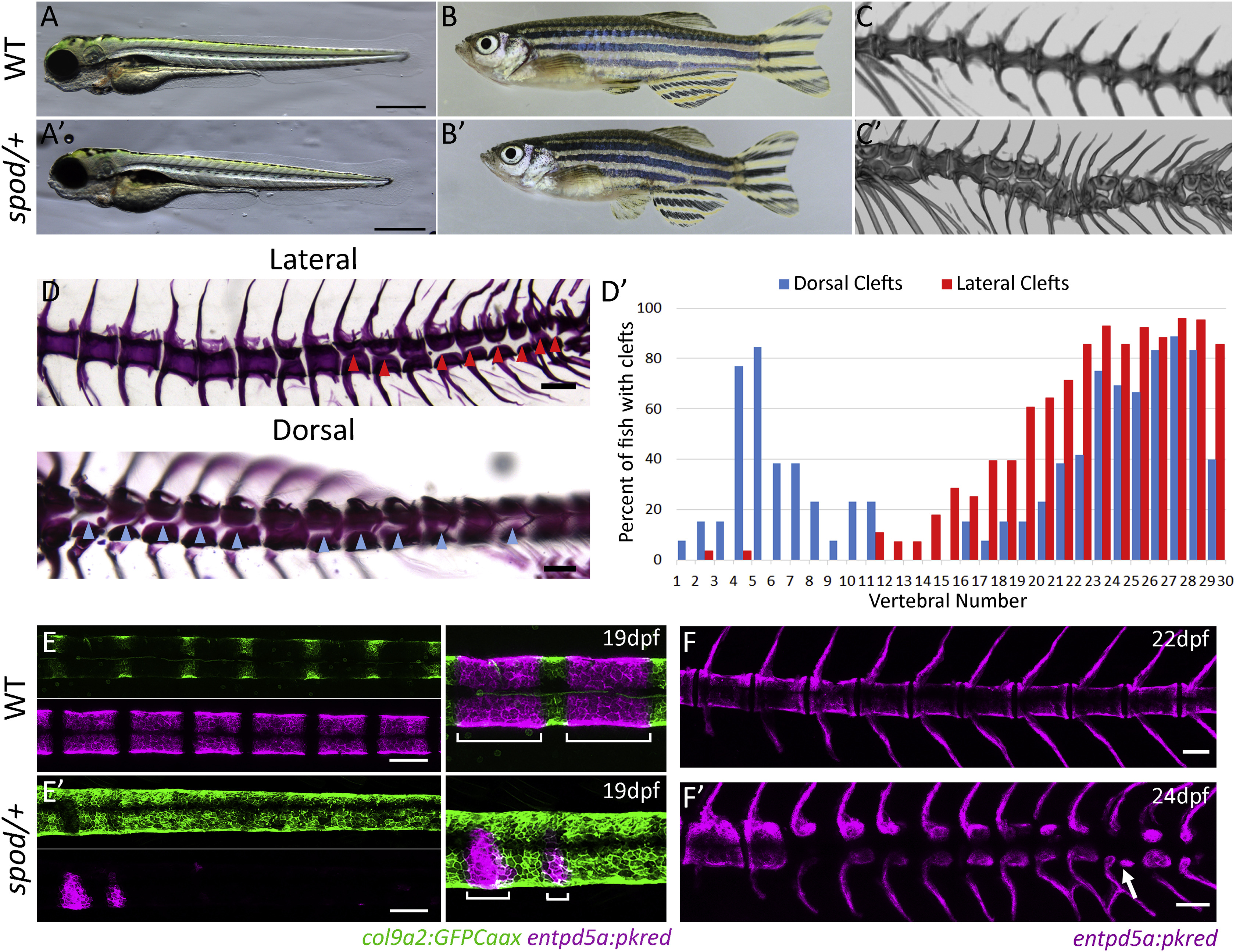Fig. 1 The spondo Mutant Impairs Axial Patterning and Leads to the Formation of Hemicentra (A and A′) spondo mutant zebrafish are viable. 4 dpf larval morphology of wild-type and cmnspod heterozygous larvae. Mutants show normal patterning of larval structures, however, are shorter in length. (B and B′) cmnspod/+ mutants are viable and exhibit short stature as adults. (C and C′) Tomographic reconstruction of vertebrae of wild-type (C) and spondo heterozygous C′) adult fish showing formation of hemicentra and periodic diplospondyly (arrow). Homozygous fish show an increase in phenotype (Figure S1). (D) Lateral and dorsal views of cmnspod/+ alizarin red stained skeletal preps. Hemicentra are present along the body axis. Arrows indicate vertebral clefts. (D′) The frequency of vertebral clefts along the body axis was quantified. Dorsal clefts were found bimodally in the rostral and caudal regions of the vertebral column, while lateral clefts were most prominent in the caudal region and associated with non-rib-bearing vertebrae. (E) Early specification of notochordal patterning is disrupted in spondo mutants. In wild-type fish, col9a2:GFPCaax expression is restricted to the prospective intervertebral discs (IVD), while entpd5a expression is activated in the mineralizing domains (future chordacentra) of the notochord sheath (bottom). (E′) Specification of the IVD and mineralizing domains is absent in spondo mutants, while the expression domain of col9a2 is expanded. Overlay of entpd5a and col9a2 transgenes shows lack of meristic patterning of chordacentra in spondo mutants. (F) entpd5a expression in wild-type juvenile fish. (F′) Heterozygous mutant showing altered patterning of centra mineralization; arrow points to a developing diplospondylous vertebrae.
Image
Figure Caption
Figure Data
Acknowledgments
This image is the copyrighted work of the attributed author or publisher, and
ZFIN has permission only to display this image to its users.
Additional permissions should be obtained from the applicable author or publisher of the image.
Full text @ Curr. Biol.

